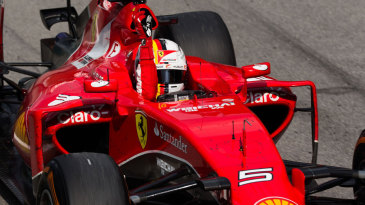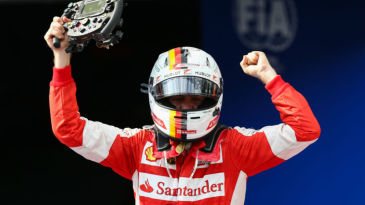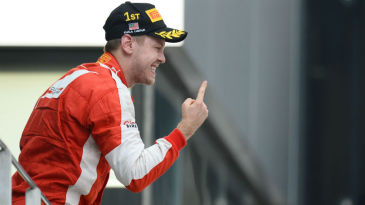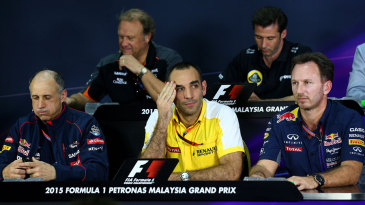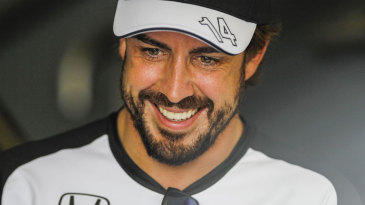
| Year | Engine | Driver | Race | Start | Won | Pod | Class | Best | 1+2 | Pole | Front | Best | Lap | Pts | Pos | ||||
|---|---|---|---|---|---|---|---|---|---|---|---|---|---|---|---|---|---|---|---|
| 1970 | Ford | D Bell, J Surtees | 7 | 8 | 0 | 0 | 4 | 5 | 0 | 0 | 0 | 5 | 0 | 3 | 8 | ||||
| 1971 | Ford | D Bell, M Hailwood, G van Lennep, S Posey, BT Redman, R Stommelen, J Surtees | 11 | 26 | 0 | 0 | 18 | 4 | 0 | 0 | 0 | 6 | 0 | 8 | 8 | ||||
| 1972 | Ford | AL de Adamich, W Ferguson, M Hailwood, JML Love, S Posey, T Schenken, J Surtees | 12 | 37 | 0 | 1 | 18 | 2 | 0 | 0 | 0 | 4 | 1 | 18 | 5 | ||||
| 1973 | Ford | LP Bueno, AL de Adamich, M Hailwood, J Mass, JC Pace | 15 | 32 | 0 | 1 | 15 | 3 | 0 | 0 | 0 | 5 | 2 | 7 | 9 | ||||
| 1974 | Ford | D Bell, J Dolhem, JP Jabouille, L Kinnunen, H Koinigg, J Mass, JC Pace, D Quester | 14 | 23 | 0 | 0 | 8 | 4 | 0 | 0 | 1 | 2 | 0 | 3 | 11 | ||||
| 1975 | Ford | D Morgan, JM Watson | 11 | 12 | 0 | 0 | 8 | 8 | 0 | 0 | 0 | 6 | 0 | 0 | - | ||||
| 1976 | Ford | C Andersson, DM Galica, A Jones, RB Lunger, HJW Pescarolo, N Takahara | 15 | 33 | 0 | 0 | 22 | 4 | 0 | 0 | 0 | 14 | 0 | 7 | 10 | ||||
| 1977 | Ford | H Binder, V Brambilla, L Leoni, L Perkins, V Schuppan, P Tambay, A Trimmer | 17 | 30 | 0 | 0 | 20 | 4 | 0 | 0 | 0 | 8 | 0 | 6 | 11 | ||||
| 1978 | Ford | RA Arnoux, V Brambilla, CV Franchi, G Gabbiani, R Keegan | 16 | 20 | 0 | 0 | 9 | 6 | 0 | 0 | 0 | 12 | 0 | 1 | 13 | ||||
| Total | 118 | 221 | 0 | 2 | 122 | 2 | 0 | 0 | 1 | 2 | 3 |
| Race | Circuit | Date | ||
|---|---|---|---|---|
| First race | British Grand Prix | Brands Hatch | July 18, 1970 | Race results |
| Last race | Canadian Grand Prix | Gilles Villeneuve | October 8, 1978 | Race results |
John Surtees is the only man to have won World Championships on both two wheels and four. Surtees had his first experience of four wheels in one of Ken Tyrrell's Formula Two Coopers before joining Ferrari in 1963. He took a close World Championship for the Scuderia in 1964, but left suddenly in the middle of 1966.
Surtees did not restrict his racing to Formula One and was an active sports car driver for Ferrari as well, setting up his own small team in association with Lola's Eric Broadley.
Surtees had a huge accident in a Lola CanAm car at Mosport in 1965 when suspension failure pitched him off the track. He was seriously injured, but fought back to fitness and broke the lap record at the Ferrari test track when he returned to the team.
Ferrari team boss Eugenio Dragoni was not convinced about his recovery, however, and was also a mentor of Ferrari's second driver, Lorenzo Bandini, whom Surtees usually shaded without much ado. Despite being favourite to take the championship and winning at Spa-Francorchamps in the teeming rain, Surtees and Dragoni had one run-in too many and John left immediately to join the Cooper-Maserati team.
For the following two seasons, Surtees drove for Honda and then had a year with BRM before deciding to build his own car for 1970.
The first Surtees Grand Prix car made its debut in the British Grand Prix at Brands Hatch, where Surtees ran seventh before retiring. He scored his first points as a Formula One constructor with the TS7 when he finished fifth in the Canadian Grand Prix. His first win came in the non-championship Oulton Park Gold Cup.
The TS9 followed for 1971, with Rolf Stommelen joining Surtees in his last full season as a driver. For 1972, Surtees concentrated on running his team for motorcycle-racing buddy Mike Hailwood and Tim Schenken. Hailwood had made a promising debut for the team the previous year, and shone when he finished second in the Italian Grand Prix.
Surtees' last grand prix was at Monza in 1972 when he debuted the new TS14. Hailwood led the Race of Champions at Brands Hatch with the car in 1973 until he crashed heavily after a mechanical failure. He was then joined by the promising Brazilian driver, Carlos Pace, who finished on the podium in Austria.
The 1974 season was grim. Jochen Mass and Pace started the year, but Carlos soon left and later in the year Derek Bell and Jean-Pierre Jabouille drove. The team was operating on a shoestring and both cars failed to qualify at Monza.
Austrian Helmut Koinigg drove a TS16 in the Canadian Grand Prix, finishing ninth, but was killed in a slow-speed accident next time out at Watkins Glen.
John Watson drove for Team Surtees in 1975 before joining Penske. Surtees then did a deal leading to what his cars were probably most famous for: racing in Durex livery. Alan Jones was the first driver and, ironically, the TS19 proved much more competitive than most of the chassis that had gone before. It led to a very public withdrawal of BBC television's cameras from the pre-season non-championship races in Britain.
The TS19s did not actually achieve much in the form of hard results, though, and Vittorio Brambilla was driving one when he was injured in the multiple accident at the start of the 1978 Italian Grand Prix.
René Arnoux looked the most promising driver to try the new TS20 and, with ground-effects technology taking over, Surtees planned the TS21 with that in mind for 1979. Unfortunately, however, sponsors would not commit to the team and so Surtees decided to bring down the curtain on his team's Formula One participation.
Reproduced from The Ultimate Encyclopedia of Formula One published by Carlton Books
- Andretti all but secures title with sixth win (August 27, 1978)
- Andretti consolidates lead with Hockenheim triumph (July 30, 1978)
- Lauda courage sees Hunt dramatically snatch title (October 24, 1976)
- Hunt eventually stripped of victory (July 18, 1976)
- Tyrrells finally come good at Anderstorp (June 13, 1976)
|
Jan 28, 1973 Carlos Pace makes his debut for Surtees at the Argentinean Grand Prix © Sutton Images |
May 30, 1972 Surtees driver Tim Schenken © Sutton Images |
|||||
